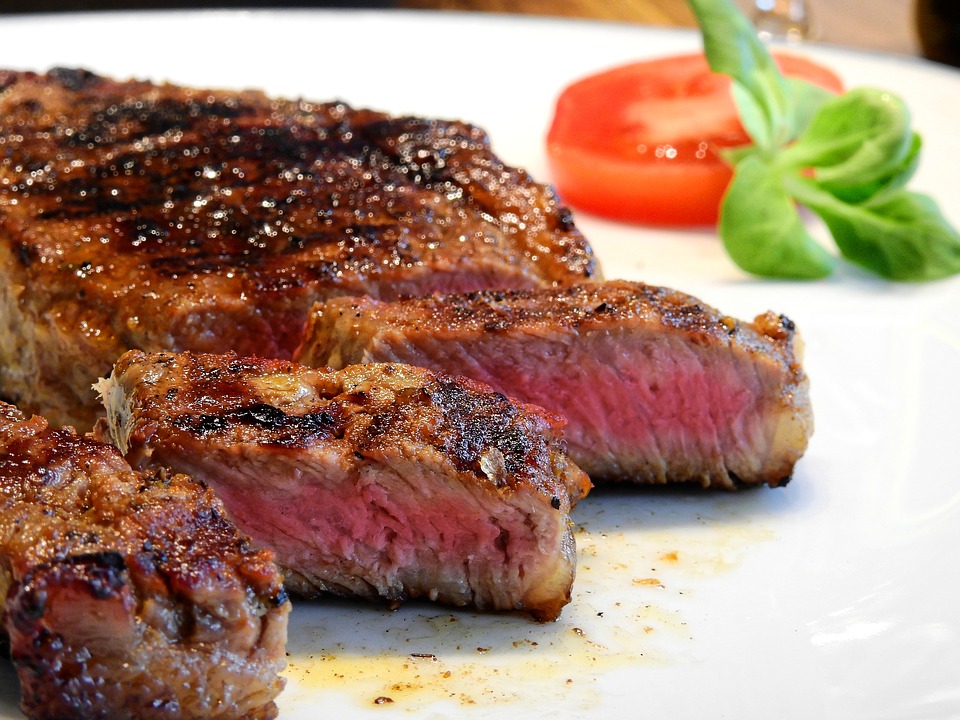4 Great Steps to Take for the Perfect Steak
 Cooking a delicious steak sounds like an easy task, but a few simple mistakes can ruin the entire experience. From the cut of meat to what to do after cooking, preparing the perfect steak is almost a science. The four simple steps below will take your steak game to new levels.
Cooking a delicious steak sounds like an easy task, but a few simple mistakes can ruin the entire experience. From the cut of meat to what to do after cooking, preparing the perfect steak is almost a science. The four simple steps below will take your steak game to new levels.
Step 1: Select the Right Cut
Selecting the wrong cut of steak hinders your dinner from the very start. If possible, try buying your meats from a local butcher so you know you are getting quality cuts. When browsing the various cuts of meat, take note of which cuts are thicker and marbled with fat. Thicker cuts of steak are ideal for searing while keeping the center rare or medium-rare while the extra fat keeps the steak juicy.
Popular cuts of steak often come from the rib or the loin sections of the cow. The muscles in these sections do relatively little work, leaving you with tender cuts of steak. Rib steaks (bone-in) and rib eye steaks (a boneless rib steak) both come from the rib section. For a steak cut from the loin, opt for strip steaks, T-bone steaks, porterhouse steaks, and filet mignon.
Step 2: Season Properly
There is a plethora of suggested seasoning methods to choose from when preparing your steaks. While some tout simplicity as the key to perfection, others praise complexity.
Wade Wiestling of Mastro’s Steakhouse tells Business Insider to stick with a salt and pepper rub for an effortless, yet delicious, steak. For a little more layering, however, you can try basting the steak with a mix of butter, garlic, rosemary, and thyme as it cooks.
Whether you choose salt and pepper or a more complex rub, don’t under-season. In fact, chef Ming Tsai recommends over-seasoning: “’the only thing worse than using too much salt is not using enough.’” Coating the outside of the steak is ideal, especially if you have chosen a thick, high quality cut of steak.
Step 3: Cook with High Heat
Although the ideal seasoning for a steak is debatable, chefs often agree that high heats are ideal for steaks. If you want to mirror the methods used by Bryan and Michael Voltaggio in the Voltaggio Brothers Steakhouse at the MGM, National Harbor, simply cook your steaks on an old-fashioned cast iron skillet. Allow the skillet to heat up, and then sear both sides of the steak. Finish the steaks by moving the entire skillet into the oven at 400 degree Fahrenheit. Use a meat thermometer to check progress (115 to 120 degrees is ideal for rare to medium-rare steaks).
Just remember, if you are pan-searing, cook in a fat with a high smoke point, like butter. Olive oil’s smoke point is far too low for the high temperatures necessary to pan sear steaks.
If you prefer to grill your steaks, still opt for high temperatures. Whatever you do, though, refrain from checking the meat too often or over-flipping. Ensure that you have a spot with indirect heat to move the steaks to, if necessary, to avoid over-charring your meat. Moving your steaks to indirect heat is similar to finishing your steaks in the oven.
Step 4: LET IT REST
Although the temptation to cut into a steak right away is overwhelming, you must resist. Doing so spills most of the juices from the steak to the plate, ruining an otherwise phenomenal dinner. Instead, let it rest for five to ten minutes before serving.
This step is not just something made up by steak snobs—there is science to back it up. The hot exterior of the steak forces juices into the cool center. Allowing the steak to rest gives those juices a chance to flow back into the rest of the steak, resulting in losing less juice when cut. Don’t worry about your steak getting cold, either; steaks continue to cook after removing from heat, so it is ideal to pull a steak just before it’s cooked, anyway.

















